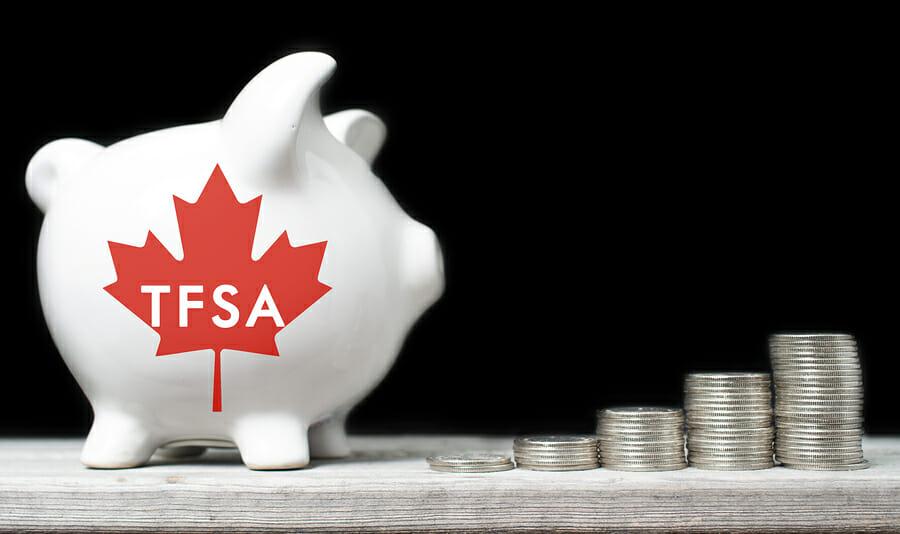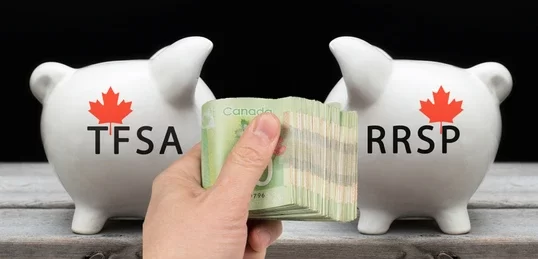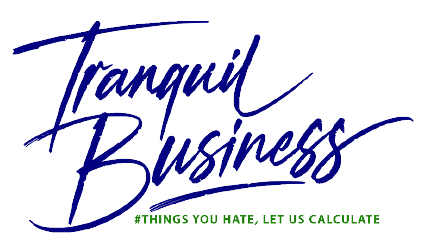
Maximizing Tax Savings for Small Businesses: How TFSA Can Help?
A Tax-Free Savings Account (TFSA) is an investment account that allows Canadians to save money tax-free. These were introduced in Canada in 2009 as a way for individuals to save for their future without being taxed on the growth of their investments. However, TFSAs are not just for individuals; they can also be used by small businesses to save money and reduce their tax liabilities.
In this article, we will explore what a TFSA is and how it can help small businesses save taxes. We will also look at the tax benefits of a TFSA, who is eligible to open a TFSA, how much a small business can contribute to it, investment options in it, TFSA vs. RRSP, withdrawal rules and penalties for it, and tips for small businesses to maximize tax savings through it.
What is tax free savings account, and how does it work?
A Tax-Free Savings Account is a registered investment account that allows Canadians to save money tax-free. Any income earned within a tax free savings account, including interest, dividends, and capital gains, is not subject to tax. Additionally, any withdrawals from a TFSA, including both contributions and earnings, are also tax-free.
TFSA contributions are not tax-deductible, but any growth in the account is not subject to tax. TFSA contributions can be made by individuals who are 18 years of age or older and who have a valid Social Insurance Number (SIN).
Tax benefits of a TFSA for small businesses
Individuals typically use a Tax-Free Savings Account for personal savings, but small businesses can also benefit from it. To understand the tax benefits of it for small businesses, consider these important pointers:
Tax-Free Savings:
Any income earned within this account is tax-free, which means small businesses can save money on taxes while still earning interest on their savings.
Easy Access to Funds:
Unlike other types of registered accounts, it allows for quick and easy access to funds. This can be beneficial for small businesses that need quick access to cash flow for unexpected expenses or opportunities.
No Withdrawal Penalties:
Unlike RRSPs, there are no penalties for withdrawing funds from a tax free savings account. This means that small businesses can withdraw money from their account at any time without incurring additional costs.
Flexibility:
Tax-free savings accounts can hold a variety of investments, including stocks, bonds, and mutual funds. This allows small businesses to diversify their investments and potentially earn higher returns.
No Age Restrictions:
Unlike RRSPs, there are no age restrictions for TFSAs. This means that small business owners of any age can contribute to a TFSA.
No Income Requirements:
There are no income requirements to open a tax free savings account, making it accessible to small business owners at any income level.
Use it as a Retirement Savings Tool:
Small business owners can use TFSAs as a tool to save for retirement, alongside other retirement savings vehicles like RRSPs.
Contribution Room:
Small business owners can accumulate unused contribution rooms over time, meaning they can contribute larger amounts in the future if needed.
Therefore, TFSAs can be a valuable tool for small businesses looking to save money on taxes and earn tax-free interest on their savings. With easy access to funds, no withdrawal penalties, no contribution limits, and a range of investment options, TFSAs offer small business owners the flexibility they need to manage their finances effectively.
Who is eligible to open a tax free savings account?
Any Canadian resident who is 18 years of age or older and has a valid Social Insurance Number (SIN) is eligible to open a Tax-Free Savings Account. Any non-resident of Canada who has a valid SIN and is age 18 years or above is also eligible under TFSA. Just non-residents will be subject to a 1% monthly tax. Hence, TFSA is available for both individuals and small businesses.
How much can a small business contribute to a this account?
The annual contribution limit of the Tax-Free Savings Account for 2023 is $6,500. However, if an individual did not contribute the full amount in previous years, they can carry forward unused contribution room to future years. This means that the total contribution limit for an individual may be higher than $6,500.
For small businesses, the contribution limit is based on the number of employees in the business. Each employee is eligible for their own TFSA contribution limit, which means that a small business with multiple employees can potentially contribute a significant amount of money to their TFSAs.
What happens if you over-contribute to it?
If a small business withdraws funds from its TFSA and then re-contributes the same amount in the same year, it will be subject to an over-contribution penalty of 1% per month on the excess amount.
Making withdrawals from it
While withdrawals from a TFSA are tax-free, there are some rules and penalties that small businesses should be aware of. Firstly, there is an annual contribution limit of $6,500, which means that any contributions above this amount may be subject to penalties. Secondly, any withdrawals from a TFSA will create additional contribution room the following year.
Investing in a TFSA: What are the options available?
There are various investment options available for Tax-Free Savings Accounts, including stocks, bonds, mutual funds, exchange-traded funds (ETFs), and savings accounts. It is important to note that any investments held within a TFSA must be Canadian-based, meaning they must be listed on a Canadian exchange.
Small businesses should consider their investment goals and risk tolerance when selecting investments for their TFSA. Consult with a financial advisor to determine the best investment strategy for the business.
TFSA vs. RRSP: Which is better for small business tax savings?

A registered Retirement Savings Plan (RRSP) is a retirement savings and investing plan for Canadians who are employees or self-employed. There are various investment options available under RRSP, including individual stocks, mutual funds, and bonds. However, RRSP is a retirement savings plan registered with the Government of Canada to which an individual contributes for retirement purposes.
While TFSAs and RRSPs offer tax benefits, they serve different purposes. TFSAs are ideal for short-term savings goals, while RRSPs are designed for long-term retirement savings. RRSP is a retirement savings plan registered with the Government of Canada to which an individual contributes for retirement purposes.
One of the key differences between TFSAs and RRSPs is how they are taxed. Contributions to RRSPs are tax-deductible, which means that individuals can reduce their taxable income by the amount of their contribution. However, any withdrawals from an RRSP are subject to tax.
In contrast, contributions to TFSAs are not tax-deductible, but any investment income earned within the account is not subject to tax. Additionally, any withdrawals from a TFSA are also tax-free.
For small businesses, the decision of whether to contribute to a TFSA or an RRSP will depend on their specific financial goals and tax situation. Consult with a financial advisor to determine the best strategy for the business.
Tips for small businesses to maximize tax savings through a tax free savings account
Start early: The earlier a small business contributes to a it, the more it will be able to save tax-free.
Choose the right investments: Small businesses should select investments that align with their goals and risk tolerance. It may be helpful to consult with a financial advisor to determine the best investment strategy.
Monitor contribution limits: Small businesses should keep track of their contribution limits to avoid penalties for over-contribution.
Consider carrying forward unused contribution room: If a small business did not contribute the full amount in previous years, they could carry forward unused contribution room to future years.
Re-invest withdrawn funds: Small businesses should consider re-investing any funds withdrawn from their TFSA to maximize tax-free growth.
What do you need to do?
Tax-free savings accounts can be a powerful tool for small businesses looking to save money and reduce their tax liabilities. By earning investment income tax-free and allowing tax-free withdrawals, a TFSA can help small businesses achieve their financial goals. However, it is important for small businesses to carefully consider their investment strategy and monitor their contribution limits to avoid penalties. Overall, a TFSA can be an effective way for small businesses to save taxes and build wealth for their future.
How Tranquil Business can help?
As we discussed above, these accounts are a great way for small businesses to save money and earn interest tax-free. At Tranquil Business, we understand that small business owners may not have the time or resources to research and manage their TFSA accounts on their own. That’s why we offer TFSA services that can help small businesses maximize their contributions and returns.
Our team of professionals can work with small business owners to assess their financial goals. We also create a TFSA investment plan that is tailored to their needs. In addition to our TFSA services, we offer various other financial services to help small businesses succeed.
If you’re a small business owner looking for assistance with TFSAs or other financial services, we would love to hear from you. Contact us today to learn more about how we can help you achieve your financial goals.
